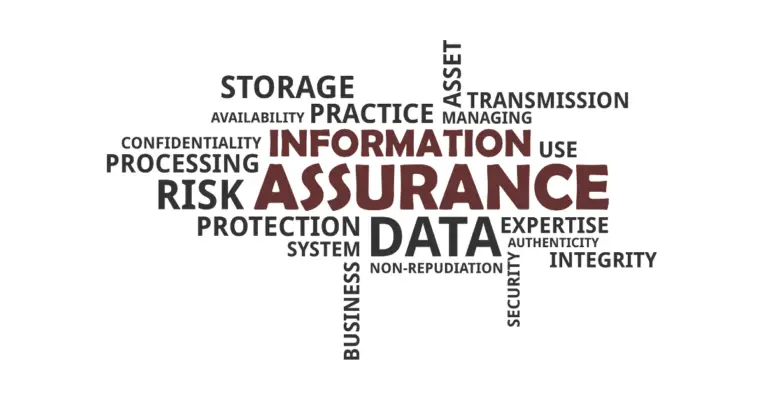Compliance management is not the same as risk management. Compliance activities are not all linked to risk management. There are, however, many situations where the compliance-risk management boundary blurs. Risk managers frequently get involved in relevant compliance activities, and risk management may become a responsibility of the compliance manager. As part of their responsibility, several company executives and other governance experts will frequently engage in risk management and compliance management.
In two ways, compliance and risk management are related.
1. In many countries and fields, some rules and regulations about business risk management or crypto (which must be followed).
2. When there are laws, rules, and regulations in place, it’s possible that an organization will be punished if discovered to be non-compliant. It is known as compliance risk. It may be reduced by using risk management tools and methods.
A company’s risk management function may manage any compliance risks connected to risk management that are imposed by-laws and rules.
The risk management function may assist the compliance function and other specialized functions by offering advice on managing compliance risks.
Compliance risk assessment is a process that should be conducted within an organization to understand how it will comply with the laws and regulations. Compliance risk assessment can take place at any stage of the enterprise’s lifespan. The best time to conduct compliance risk assessments will depend on the industry, organization size, regulatory focus, the scope of operations, key risk indicators and other factors. The content of compliance risk assessment will also vary depending on the country that the company is operating in or where they are trading.
Typically there are six steps to conducting a compliance risk assessment- this includes identifying risks, identifying controls, assessing risks against controls, measuring risks, reporting findings, and taking corrective measures.
Step One: Identify Risk Areas Through getting a Consolidated Database with Rules and Regulations that pertain to the Organization
Before conducting a compliance risk assessment, it is essential to identify what risks exist. Some factors that may increase the risk of non-compliance include:-
- Inadequate resources may lead to an increased risk of non-compliance because the resources are not enough to conduct legal and regulatory requirements.
- lack of knowledge about legal and regulatory requirements
- Unclear or conflicting policies and procedures
- Infrequent or unannounced audits,
- Insufficient surveillance.
- Outsourcing functions to less knowledgeable third parties, inadequate training can all contribute to a greater risk of noncompliance.”
Identifying rules and regulations in the organization is the first step in assessing and identifying compliance risks. For the library of the rules, laws, and regulations, instances of noncompliance will be documented for future reference.
This stage’s aim is to establish a list of rules, laws, procedures, processes, and guidelines that govern the organization’s activity within its jurisdiction. It should be done for each area of operation. Like any other entity under regulatory investigation or having successfully undergone an audit, the library must have documented every aspect necessary to present the organization’s compliance to regulatory bodies in any area of their operation.

Step Two: Identify Control Points and Methods
The next step is to identify the methods used to identify risks and measure them against the identified controls. It includes listing all internal controls, policies, and procedures currently in place within an organization which helps manage risks. Internal controls are policies, procedures, and processes put in place by an organization to manage its risks.
Five types of compliance management control are used for managing compliance risks:-
-
Policies and procedures:
within an organization may be designed to comply with regulations, or they may be created to comply with other activities that have a compliance component. Risk management policies and procedures, for example, could include features that are concerned with risk management compliance with relevant risk management laws and regulations (health and safety rules or prudential rules).
Compliance strategies ensure that the company complies with all applicable laws, rules, and regulations. They must describe how risks should be recognized, evaluated, tracked, and controlled. Additionally, they will go into detail regarding many roles and responsibilities involved in compliance management.
Compliance management processes will describe how specific compliance risks are to be tracked and managed. There may be ‘know your customer procedures in place, such as verifying a customer’s identity or complaint handling guidelines that outline how complaints should be addressed in line with applicable business laws. Guidelines for monitoring and reporting on suspicious transactions.
2. Compliance codes of conduct
In certain instances, an organization may have one or more codes of conduct. These are frequently related to compliance. Furthermore, professional organizations may establish rules for their members to which they expect them to adhere.
Regulators may implement codes of conduct for certain positions, such as board directors and the functions that assure them, notably risk management.
The Code of Conduct is a legally binding document. that specifies the type of behavior that is expected of crucial personnel, managers, and directors in an entity. Codes may include regulations that must be followed at all times and advice on acceptable conduct.
In more severe circumstances, employees who are discovered to violate a code of conduct may face disciplinary action such as a formal warning letter, the loss of a bonus or raise, or dismissal.
3. Compliance reviews and audits
Internal audits are the most common types of internal reviews. Compliance evaluations check and assess the effectiveness of compliance-related controls. Reviews may focus on particular rules and regulations and specific operational areas such as pay, payroll, health, or safety. IT security is an example of a functional space that a compliance review might evaluate.
Compliance reviews will look to see if compliance controls are used correctly and whether more measures are necessary. When weak points are discovered, they might be ranked in terms of urgency from lowest to highest. Project Managers may agree on actions to ensure that any flaws are addressed as soon as possible.
Internal audits of key organizational processes and functions might identify compliance-related concerns associated with flaws in these processes or controls. For example, examining a company’s treasury function or data integrity procedures may reveal compliance issues relating to financial crime regulations or data protection laws.
4. Compliance impact analysis
A compliance impact analysis is a type of risk assessment that determines the consequences of a violation.
Compliance impact analyses measure the immediate and long-term financial costs of a breach. They may also consider non-financial repercussions such as public opinion effects. In the event of a violation, any fines or direct financial expenditures are referred to as direct financial costs. Incidental legal and court fees are not included in the overall price. Accidental financial payments include those connected with managing the consequences of a breach. The expense of staff time spent dealing with regulators, lawyers, and the media is one crucial indirect cost.
The effect of legislation and regulation on an organization’s reputation can be considerable, especially in public companies. In terms of non-financial repercussions, organizations that violate a law or regulation may incur negative media and social media attention.
The direct and indirect financial costs of a data breach may be estimated using a compliance impact analysis. An ordinal scale (one to three or one to five) may be utilized in place of a quantitative scale (one hundred to one thousand) to give a rough estimate of the financial consequences. Because adding numerical values to intangible elements like reputation damage is demanding.

5. HR-related controls
From a compliance management standpoint, HR-related controls are vital. The following are some example controls:
- To assist organizations in maintaining compliance by providing employees with the incentives, expertise, and training they require to support compliance management activities;
- When a workplace member is not fulfilling their compliance management obligations, such as when a staff person is found to breach a policy, procedure, or code of conduct.
Step Three: Assessing Risks Against Controls
A key part of compliance management is assessing the risks after controls have been put in place. This assessment is the point at which compliance officers ask, “what if?”.What if a staff person fails to report a data breach? What happens if our IT system crashes and we lose critical information? What will happen if a financial crime occurs within the organization? This is where risk management comes in.
To choose appropriate responses to identified risks, compliance officers must assess the probability of an adverse event occurring. Compliance managers may estimate this likelihood using a qualitative scale from one to ten or by ranking one to five; they can also compare it with other organizations’ experiences or use the Enterprise risk management matrix. For example, compliance officers may assess the risk of a data breach in one location as three out of five, while in another site, this same risk might be ranked at four out of ten.
Once compliance managers have identified risks that require attention, they can select appropriate responses to mitigate or reduce negative impacts. There are many ways to do this:
The above controls mentioned in step two can help organizations become compliant and reduce their risks. Once they have been identified, the organization is better positioned to make informed decisions about how to manage compliance.

Step Four: Measuring Compliance Risks
The identified risks are measured against the organizational risk matrix. It will entail the product of likelihood and impact. The identified risks will be ranked as low, medium, or high according to their (L*I) product.
1. Low: (L*I) = 1*1= 1
2. Medium: (L*I) = 2*3= 6
3. High: (L*I) = 3*5= 15
Compliance risks identified will be without controls( inherent), and adjusting it with these controls(residual) will be taken as a base for measuring the risks. The risk identified with potential mitigation or management will be mitigated by the risk scores given to these controls. After this, all risks are ranked according to their rank in the Organizational Risk Matrix using impact as weightage for each risk.
It is understood that there is not much difference between low and medium-classed risks. However, high-ranked risks will be given utmost importance, and the mitigation plan must be prepared promptly.
Any risk mitigated through measures and controls by the business unit/ function is not to be included in the list of compliance risks but must yet be considered because compliance risk can always arise.
Step 5: Compliance Risk Reporting
compliance reporting is also necessary to increase your company’s risk-based compliance activities, impact analyses, reviews, and gap analyses. Compliance reports cover the most recent laws and rules and any modifications to existing laws and regulations. In addition, compliance controls may be monitored to assess their effectiveness.
The number of reported non-compliance breaches or near-miss incidents, delays in identified internal audit measures, and metrics about specific topics such as data protection or consumer complaints are all examples of KPIs.
The compliance function will generate reports. Alternatively, the company secretary or another governance professional may oversee their creation.
Issues should be communicated to the board of directors and audit committee as appropriate to assist in ensuring that the organisation complies with applicable laws and regulations.Reports may also be given to top management and departmental or functional management to assist them in overseeing the effectiveness of their compliance management activities and taking action if necessary.
Step 6: Compliance Risks Mitigations
High-ranked compliance risks are subjected to SMART(specific, measurable, actionable, and timely) improvement actions. Improvement actions will be monitored monthly for high risks, quarterly for medium risks, and annual for low risks. For example, “Automated monitoring to detect configuration changes in the system environment.”
An automated tool is required to monitor the configuration of systems. Changes are constantly being made among devices configured on networks. Monitoring activities are needed to realize whether any deviation has occurred between the previous structures and the current version within a time frame.”
Identifying an appropriate response to each identified risk that has been assigned a risk level rank. The response varies depending on the risk level, where high-level risks require immediate actions while low-level threats will receive less priority.
Considering whether to accept or transfer the audit findings. The final decision is made, taking into account legal compliance requirements and company policies.
Conclusion
Compliance risk assessment is a process that can be done in six steps to ensure an organization’s compliance with legal and regulatory requirements. It includes identifying risks, understanding controls, assessing risks against those controls, measuring the level of risk for each control (which may lead to corrective measures), reporting findings, and ensuring all necessary changes are made. Understanding how to conduct a compliance risk assessment will help you identify any areas where your company might not comply with regulations or laws- which could save time and money later on down the line. Have you conducted this type of audit before? If not, it’s essential that you do so now! Let our team at risk publishing guide on conducting these assessments.
Chris Ekai is a Risk Management expert with over 10 years of experience in the field. He has a Master’s degree in Risk Management from University of Portsmouth and is a CPA and Finance professional. He currently works as a Content Manager at Risk Publishing, writing about Enterprise Risk Management, Business Continuity Management and Project Management.

